Most children learn how to write all the letters of the alphabet and manage to jot down a few words in their daily journals and simple assignments while in first grade. It’s not until second grade that the hand writing blues develop. Handwriting woes can run the gamut.
- Sloppy to illegible
- So much pressure the paper rips
- Too little pressure so barely seen
- Cranky and avoids handwriting assignments
- Minimal writing output
- Slow
- General anxiety regarding school develops
- Poor self esteem
In the early grades, learning to form letters is the main objective of the assignment. By second grade, focus shifts to generating text (composition), learning grammar rules, and increasing the volume of writing….all in less time.
When children have not fully integrated handwriting skills, it becomes difficult, if not impossible for them to keep up. The trouble may relate to:
- Weak hands
- Poor finger dexterity
- Difficulty with bilateral motor coordination
- Poor eye hand coordination
- Spatial and Visual perceptual delays
- Motor Planning difficulties
Refer to each of these sections to learn how to help remediate any problems in these areas.
Specific prewriting activities can also be done to improve handwriting control:
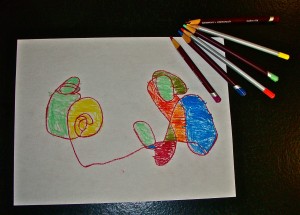 Scribble with a Purpose: The child scribbles and then colors in the random design made.
Scribble with a Purpose: The child scribbles and then colors in the random design made.-
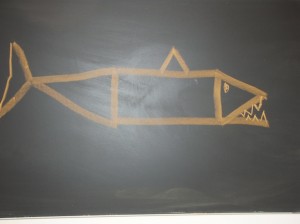 Ed Emberly Drawings: Simple shapes come together to create animals, vehicles and more. Teaches how to follow a sequence as well.
Ed Emberly Drawings: Simple shapes come together to create animals, vehicles and more. Teaches how to follow a sequence as well. -
- The child selects several colored pencils to create a design that is replicated.
-
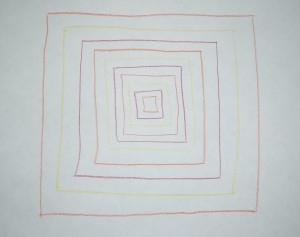 Geometric Designs: The child draws a simple shape (square, rectangle, triangle) and repeats, framing each shape as the design gets larger.
Geometric Designs: The child draws a simple shape (square, rectangle, triangle) and repeats, framing each shape as the design gets larger.
Specific writing drills can also be done to improve speed and accuracy:
 To regulate pressure: Start with very light downward lines and gradually draw the lines darker. Reverse, beginning with heavy strokes and lighten the pressure as moving across the page. After this is done correctly move onto circles across the line and eventually letters.
To regulate pressure: Start with very light downward lines and gradually draw the lines darker. Reverse, beginning with heavy strokes and lighten the pressure as moving across the page. After this is done correctly move onto circles across the line and eventually letters.
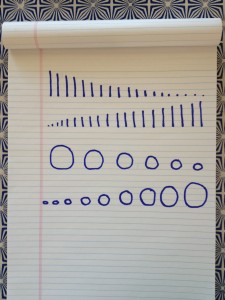 To improve sizing and spacing: Start with a large stroke, each successive stroke is smaller. Reverse, beginning with small strokes and incrementally make the line larger. Move on to circles and letters.
To improve sizing and spacing: Start with a large stroke, each successive stroke is smaller. Reverse, beginning with small strokes and incrementally make the line larger. Move on to circles and letters.
To teach the fingers to move the pencil instead of the hand: Have the child connect dots spaced close together-with the fingers pushing and pulling the pencil or marker rather than the whole hand moving. The child’s hand can be gently held down to anchor it, while the fingers are free to move the pencil.
Certain Eye Hand Activities develop specific muscle groups that improve fine motor dexterity:
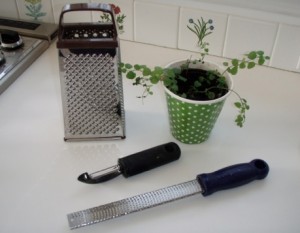 Sous Chef Activities (Grating, Peeling, Zesting)
Sous Chef Activities (Grating, Peeling, Zesting)
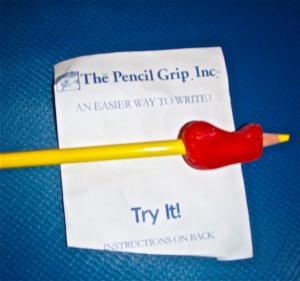 When children really struggle to hold the pencil correctly, as adapted pencil grip can help.
When children really struggle to hold the pencil correctly, as adapted pencil grip can help.
Keep in mind that handwriting drills can be super boring. Better to create meaningful writing tasks than waste money on handwriting workbooks. Here are some ideas:
- Creating the family food shopping list
- Make a “Wish List” (e.g movies to see, books to purchase, etc)
- Make a “To Do List” for weekend activities
- Keep a temperature chart (weather, soil, water)
- Create or copy favorite kid friendly recipes then make them together
- Make old fashioned scrap books, cutting pictures from old magazines, or soon to be discarded encyclopedias-label pictures pasted into the book
- Compile a collection, labeling each item (e.g. stamps, coins, rocks…)
- Write up an itinerary for weekend activities
- Play Board Games and Cards that require writing (Yatzee, Perquacky, Rummy Five Hundred, etc)
- For budding artists, after drawing a picture or creating something, encourage them to label and write a brief summary about it
- For nascent gardeners, keep a planting and harvesting journal.
- For young athletes, keep a training record and a log of teams played, scores, etc.
- For music students, compose simple songs in a music composition book
- Young scientists can document simple experiments and results
Ways to Avoid the Standard “Enthusiastic” Parental Mistakes:
- If writing notes to relatives and friends, do not demand extended word counts. Encourage creativity and mixed media (e.g. a few words intermixed with pictures). For example, making personalized cards with Stamps, then jotting a few words on the creation is more satisfying that squeezing all those words onto a purchased post card.
- Ditto with journals: If keeping a daily journal, suggest that photos, drawings or easily pasted objects pepper the pages to keep it interesting and break up the monotony and/or struggle with writing.
- Always sandwich a large motor activity before and after a writing session. This will help prep the child’s neurological system for the demands of writing. Having a physical release afterwards relieves the pressure and anxiety of writing demands.
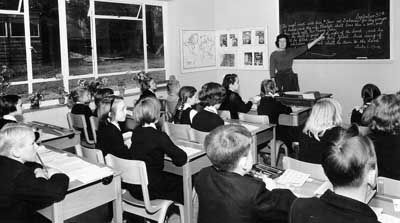

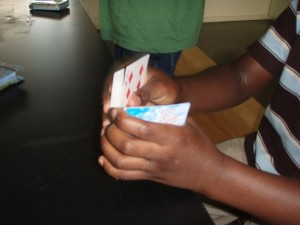
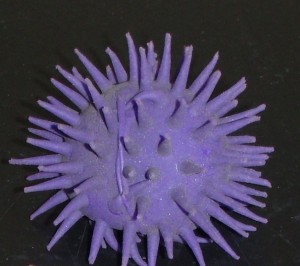
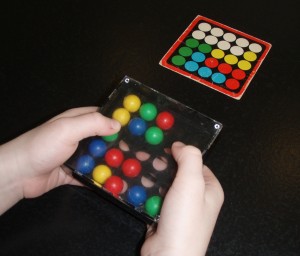
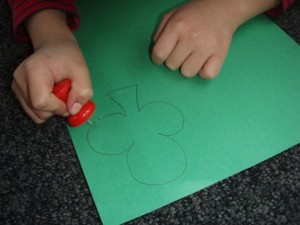
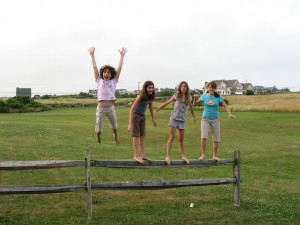
This is excellent. Thanks so much.